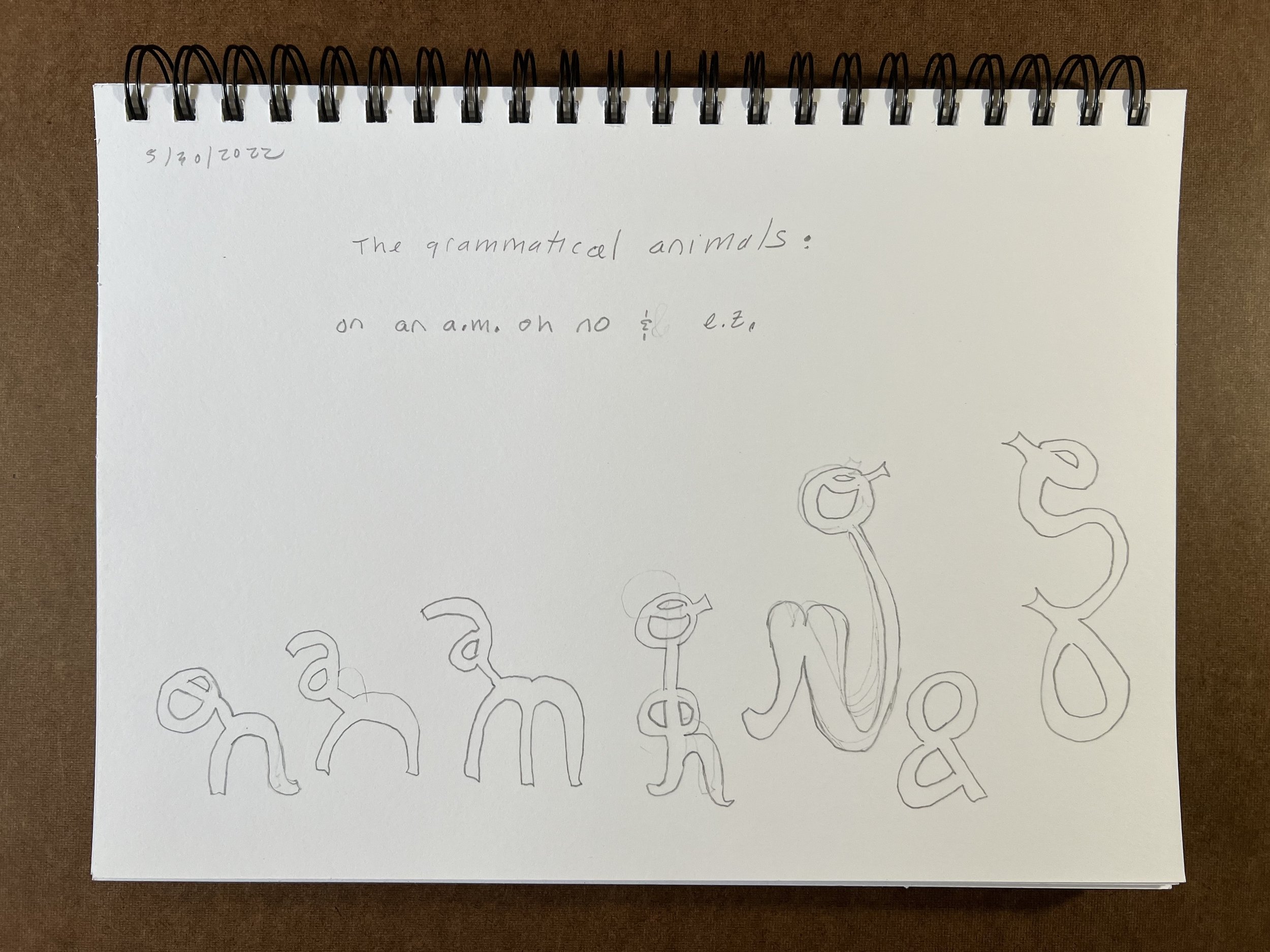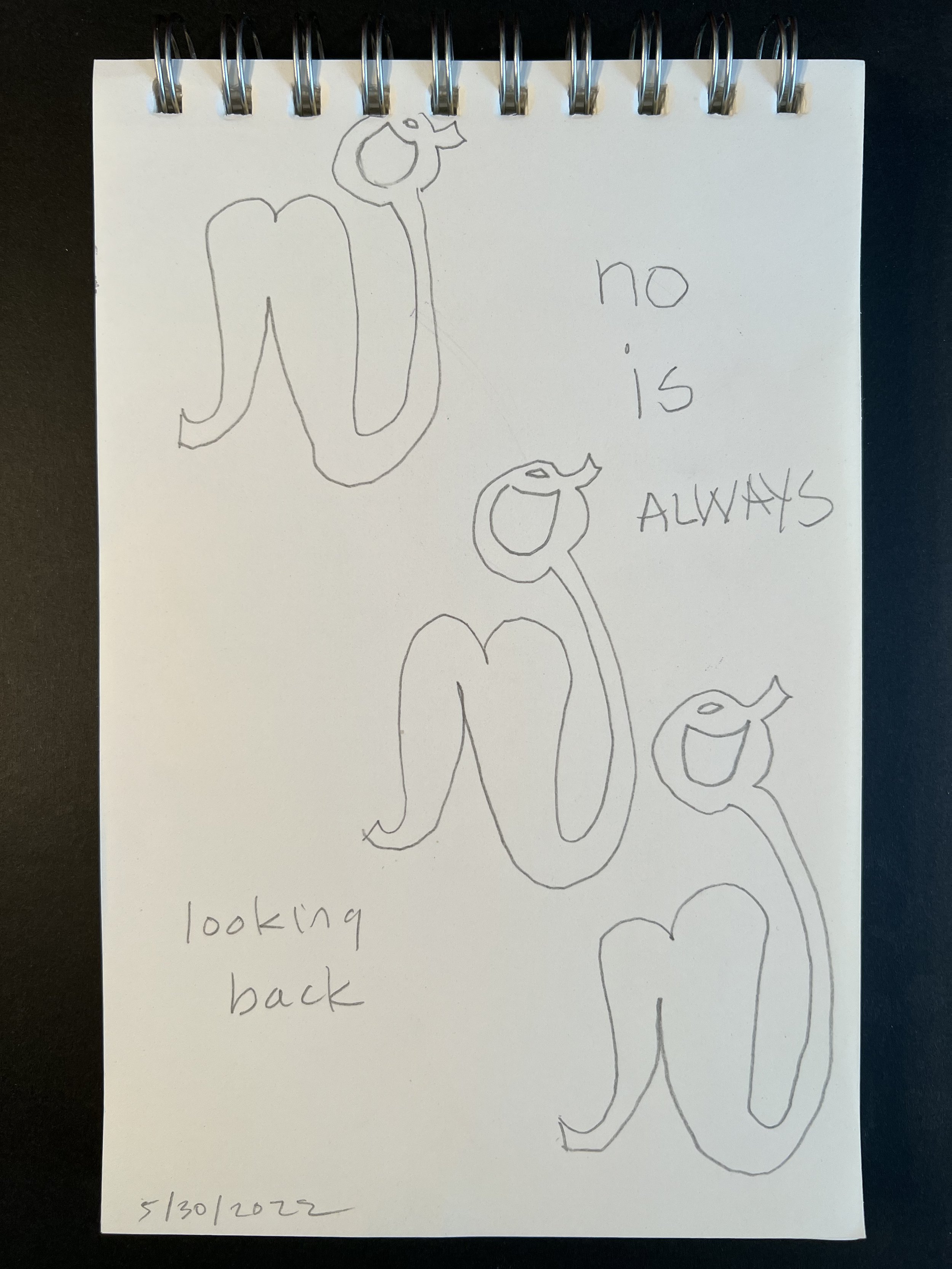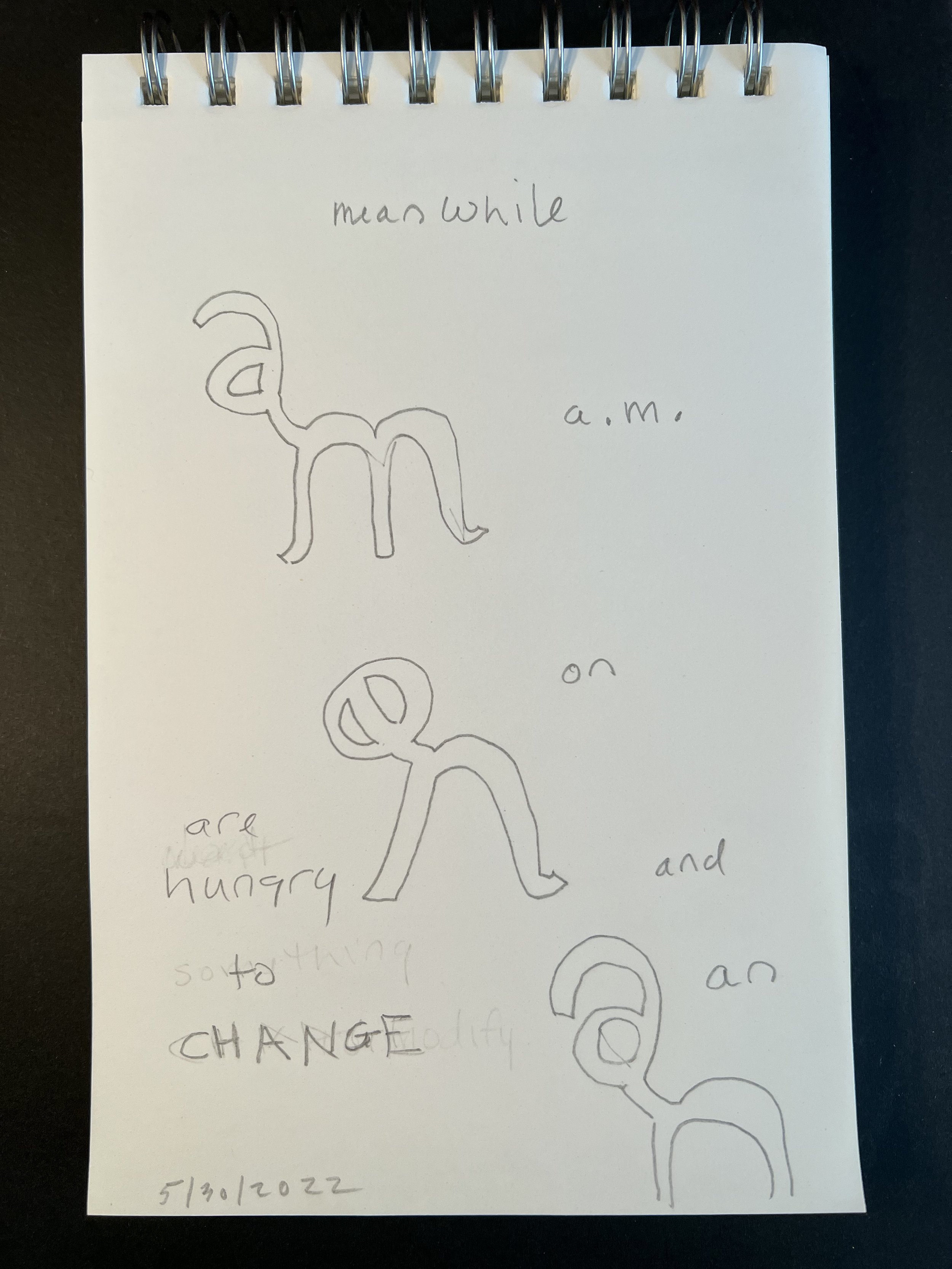Large Data Planning, Compound Productivity, and Creative Momentum
by Amy Locklin
A year after I created the first grammatical animal, a.m., I began to draw a small group of their friends.
I decided to take some advice from Alice Boyes, PhD, which I had read in her most recent book, Stress-Free Productivity. I increased the pace of creative productivity by working on three projects simultaneously. At the same time, in one project, I decided to compound two creative approaches that were related, drawing letters and writing language. The below pictures were drawn on the dates noted.
I decided to draw one or two pictures a week. This would make between 52 and 104 drawings per year, I reasoned.
Planning in the large data scale of how many drawings per year made each sketch seem less daunting as a task.
By now I have developed momentum, with an increasing hourly commitment per practice day, which arises out of compulsive engagement.
I know not to stop at a point of difficulty, and instead rest in the middle of things, with my materials ready in two locations—open on my dining room table and a standing height sideboard in my living room.
Looking at what I’ve done while I move from room to room throughout the day helps me imagine conceptually and re-engage tactilely regularly with my pads and pencils, which are staged for my next sketches. I’ve lost track of how many illustrations I’ve already scrawled in about two months time, and only a handful were unredeemable, making it into the tear-out-crumple-and-recycle pile.
Making by-hand in drawing engages muscles as much as emotion and mind, and is part of what can regenerate our creativity.
I’ve been drawing the most when I was releasing stress cycles from emotional conflicts that were completely unrelated in content to my children’s stories and characters.
As a side note, I never in my entire life pictured myself creating pictorial stories for kids, so this project is a shocker in more ways than one.
Although I’m striving for continuous outlines, no’s body challenges me for the proper sizes and shapes. I’m accepting of imperfection, which helps me keep going.
When I haven’t felt like pursuing the grammatical animals, I’ve tried sketching a baby squirrel I see often in the mornings outside my kitchen window. The tree isn’t realistic, nor the nonhuman animal, and I’ve had my two-year-old niece in mind as my target audience for these quick drawings.
Whatever you start and continue doing without thinking too much before each session will help. Trick yourself by diving into the work suddenly and as frequently as possible.
The deciding part of the process may be the biggest challenge keeping people from tapping into their creative expression and other healthy outlets.
In fact, deciding can trick our brains with rewards prematurely; it can make us feel like we’ve already achieved our recently conceived goal.
Learn to sidestep any conceptual commitment hurdles, to survive these and other dampening influences, simply by beginning to practice.
And remember, practice makes perfect, it doesn’t start there.







